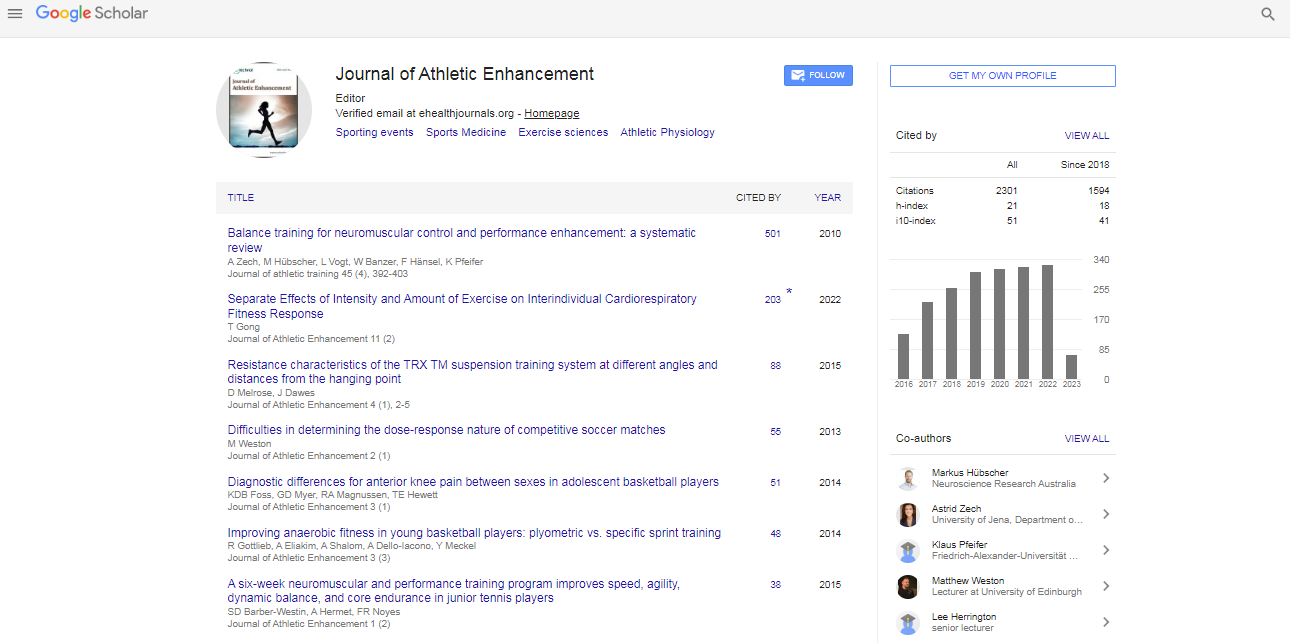Research Article, J Athl Enhancement Vol: 5 Issue: 1
Hip Adduction and Abduction Strength in Male Elite Junior Ice Hockey Players with and Without a History of Groin Injury
| Gustav Ingemarsson and Anna Maria Drake* | |
| Department of Health Sciences, Division of Physiotherapy, Lund University, 221 00 Lund, Sweden | |
| Corresponding author : Dr. Anna Maria Drake Department of Health Sciences, Division of physiotherapy, Lund University, PO Box 157, 221 00 Lund, Sweden Tel: +46 46 222 89 56; Fax: +46 46 222 18 08 E-mail: anna_maria.drake@med.lu.se |
|
| Received: October 09, 2014 Accepted: November 19, 2014 Published: November 21, 2014 | |
| Citation: Ingemarsson G, Drake AM (2016) Hip Adduction and Abduction Strength in Male Elite Junior Ice Hockey Players with and Without a History of Groin Injury. J Athl Enhancement 5:1. doi:10.4172/2324-9080.1000219 |
Abstract
Objective: Adductor muscle strain in ice hockey is a major problem associated with reduced hip strength. The aims of this study were to examine between-limb differences in hip adduction and abduction strength, and adduction/abduction strength ratios in male elite junior ice hockey players. Further aim was to explore whether these hip strength measures are related to a history of groin injury. Methods: Thirty-four male elite junior ice hockey players (age 17.1 ± 1.3 years) participated in the study. A hand-held dynamometer was used to assess hip adduction and abduction strength in the dominant and non-dominant limbs. The players were tested in the side-lying position with a ‘break test’. Results: No significant between-limb differences in hip adduction strength (3.2% [range -27% to 34%], P= 0.283), hip abduction strength (5.3% [range -12% to 45%], P=0.053), or hip adduction/abduction strength ratios (dominant limb 1.01 ± 0.18 and nondominant limb 1.02 ± 0.13, P = 0.727) were found. Of the 34 players, 14 reported a history of unilateral groin injury within the previous year. Players with a history of groin injury had marginally lower hip adduction and abduction strength than uninjured players, however, the differences were not statistically significant (P>0.05). Adduction/abduction ratios did not differ between players with a previous injury and uninjured players (P>0.05). Conclusion: The results showed no between-limb differences in hip adduction and abduction strength, or abnormal adduction/abduction strength ratios in currently uninjured male elite junior ice hockey players. To evaluate hip strength recovery following an injury, and to identify players at risk of sustaining an adductor strain, the contralateral limb can therefore be used as a reference. A history of unilateral groin injury within the previous year does not seem to affect hip adduction and abduction strength and strength ratios in male elite junior hockey players.
 Spanish
Spanish  Chinese
Chinese  Russian
Russian  German
German  French
French  Japanese
Japanese  Portuguese
Portuguese  Hindi
Hindi 
